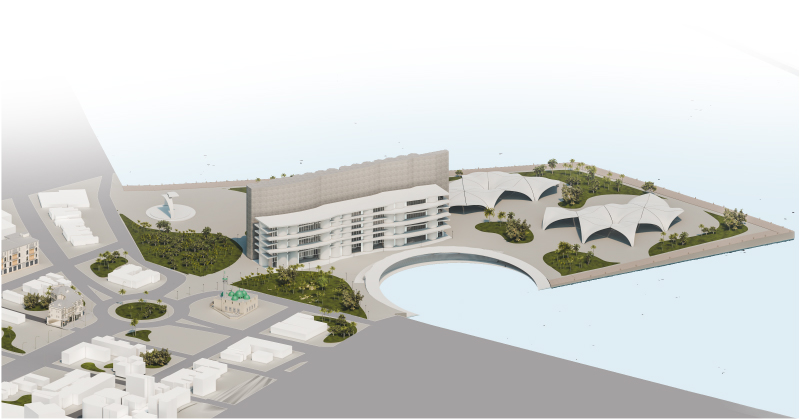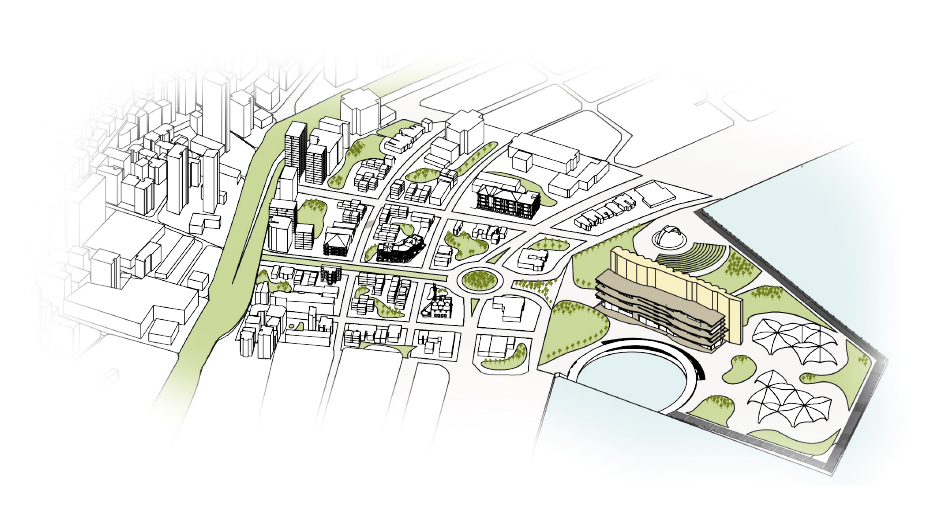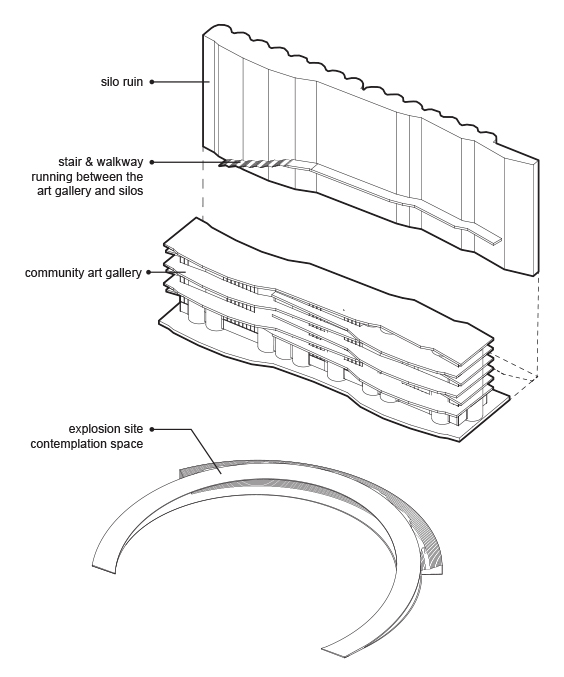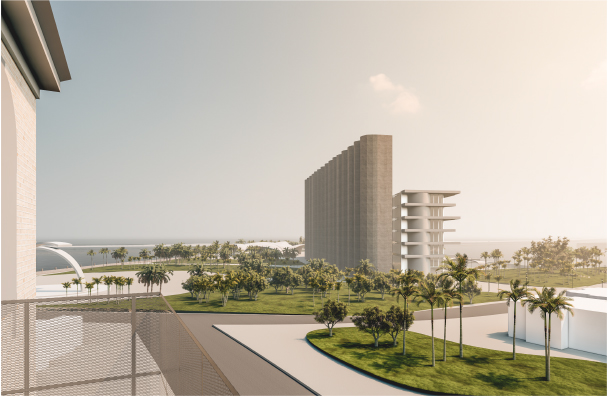Marwa Al-Saqqar, Sarah Tyl, Elaine Nahli, Manuel Ortega Santos, Amal Shawer, Sarah Tang
Port of Beirut Renewal:
Beirut Port
We are staying. The habitants of the Port of Beirut have suffered immensely over extended periods of time. This has been reflected in the infrastructure, function of the neighbourhoods, and the overall quality of life. With over 300 000 lives affected by the explosion, the Port of Beirut needs a space that is able to support its citizens, memorialize their experiences and provide new opportunities for growth.
Our section has approached this concept by transforming the explosion site into both a memorial and a functional place for the port’s inhabitants. This was done through a focus of preserving some effects of the explosion (including the crater created and the damage done to the silos), while renewing some of the functions that may have been lost due to the event. By preserving the evidence of the explosion, we hoped to acknowledge the damage done to the Port of Beirut as well as the people living there. The crater formed by the blast was highlighted and preserved as a memorial and can serve as a place of contemplation. However, this also proposed an opportunity to address other needs of the citizens both prior and post explosion. This idea of preservation was extended to the silos which acted as a shield for the rest of the city. A hub was built onto the silo remnants for the purpose of providing a safe space for the residents of the Port of Beirut as well as to support the artists that were impacted by the explosion. The multifunctional hub allows for grain storage, acts as an art gallery, and a studio space.
Port of Beirut Renewal:
Beirut Port
We are staying. The habitants of the Port of Beirut have suffered immensely over extended periods of time. This has been reflected in the infrastructure, function of the neighbourhoods, and the overall quality of life. With over 300 000 lives affected by the explosion, the Port of Beirut needs a space that is able to support its citizens, memorialize their experiences and provide new opportunities for growth.
Our section has approached this concept by transforming the explosion site into both a memorial and a functional place for the port’s inhabitants. This was done through a focus of preserving some effects of the explosion (including the crater created and the damage done to the silos), while renewing some of the functions that may have been lost due to the event. By preserving the evidence of the explosion, we hoped to acknowledge the damage done to the Port of Beirut as well as the people living there. The crater formed by the blast was highlighted and preserved as a memorial and can serve as a place of contemplation. However, this also proposed an opportunity to address other needs of the citizens both prior and post explosion. This idea of preservation was extended to the silos which acted as a shield for the rest of the city. A hub was built onto the silo remnants for the purpose of providing a safe space for the residents of the Port of Beirut as well as to support the artists that were impacted by the explosion. The multifunctional hub allows for grain storage, acts as an art gallery, and a studio space.
















